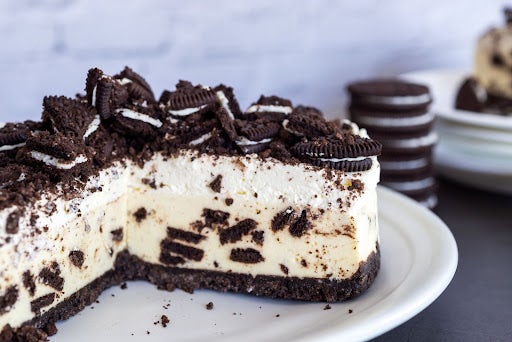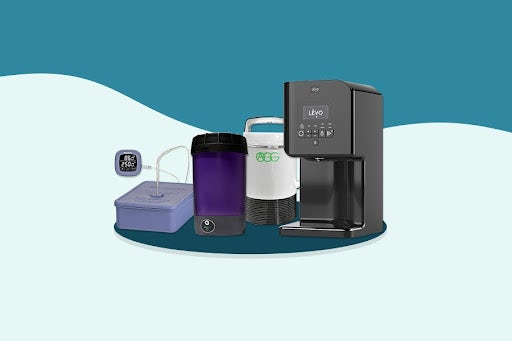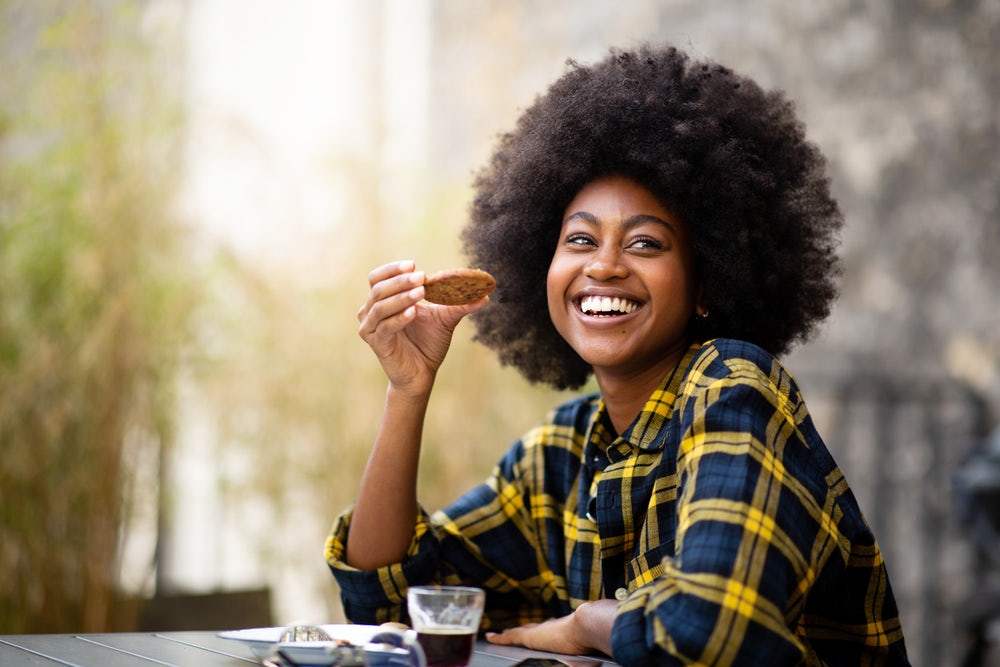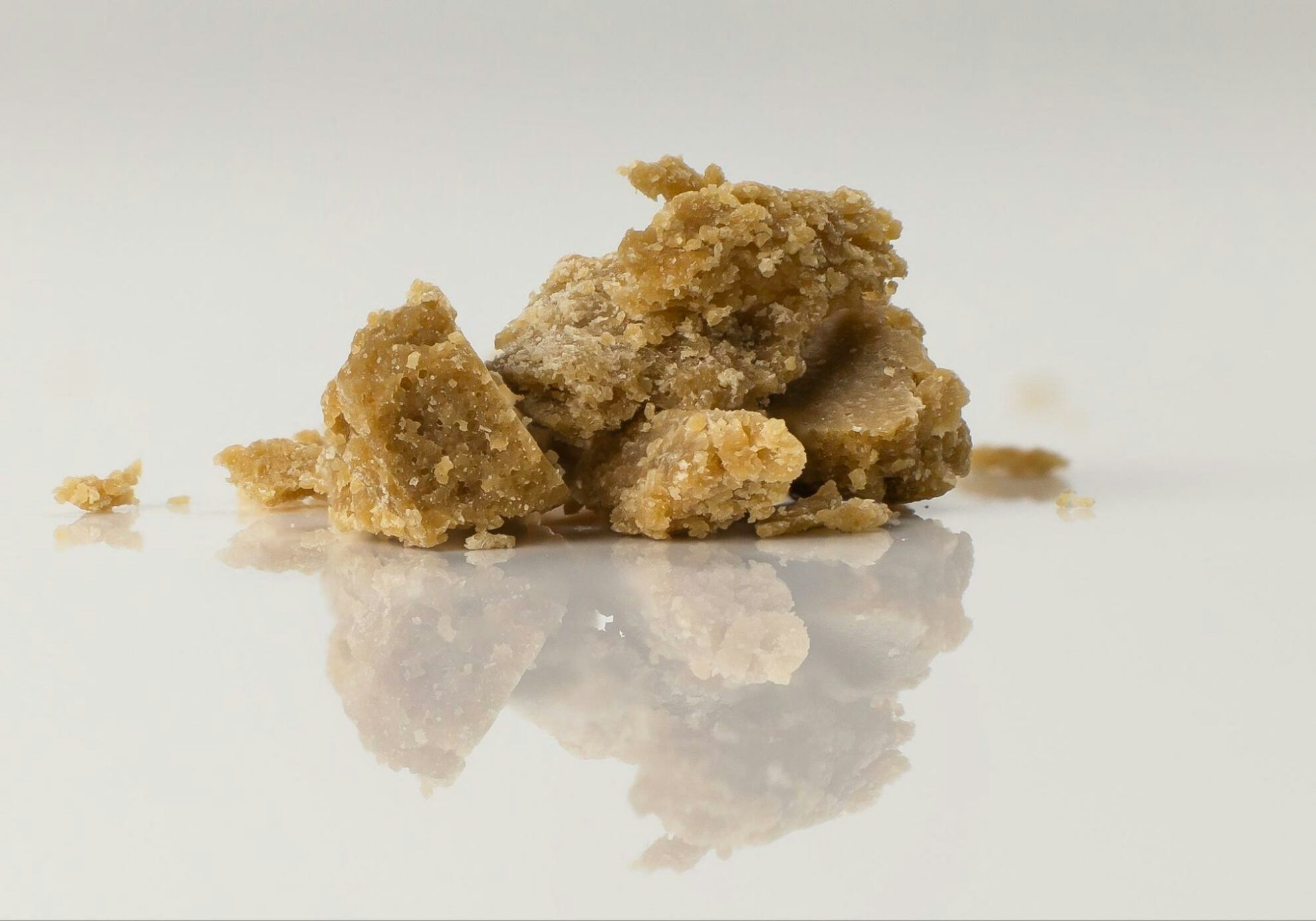One of the unique features of cannabis is that it’s available in so many different formulations. There have never been more ways to use cannabis, and edibles represent an increasingly popular delivery method.
Edibles are often considered a convenient, discreet, and effective way of accessing the therapeutic or intoxicating effects of cannabis, without exposure to the potential harms of smoking. For many cannabis users, edibles are fast becoming a favorite. In a recent survey, over half of cannabis users (52%) shared that gummies were their favorite way to consume cannabis. 1
In this guide, we’ll explore what makes edibles unique, and how they’re different from other delivery methods.
What are edibles?
Edibles are cannabis-based food products. They use an oral delivery method, which allows the user to digest cannabis through the gastrointestinal tract before being metabolized by the liver.
In general, edibles contain cannabis-infused oil or “cannabutter.” The cannabis-infused fat is then teamed with regular ingredients to create a food product.
Whether you’re gluten-free, sugar-free, vegan, or paleo, there’s an edible out there for you. Many edibles use vegan-friendly coconut or MCT oils as their fat source, because they’re perceived to be more natural and nutritious than other processed vegetable oils.
Some common examples of edibles include:
- baked goods, like brownies
- candies
- gummies
- chocolates
- lozenges
- beverages
- peanut or other nut butters
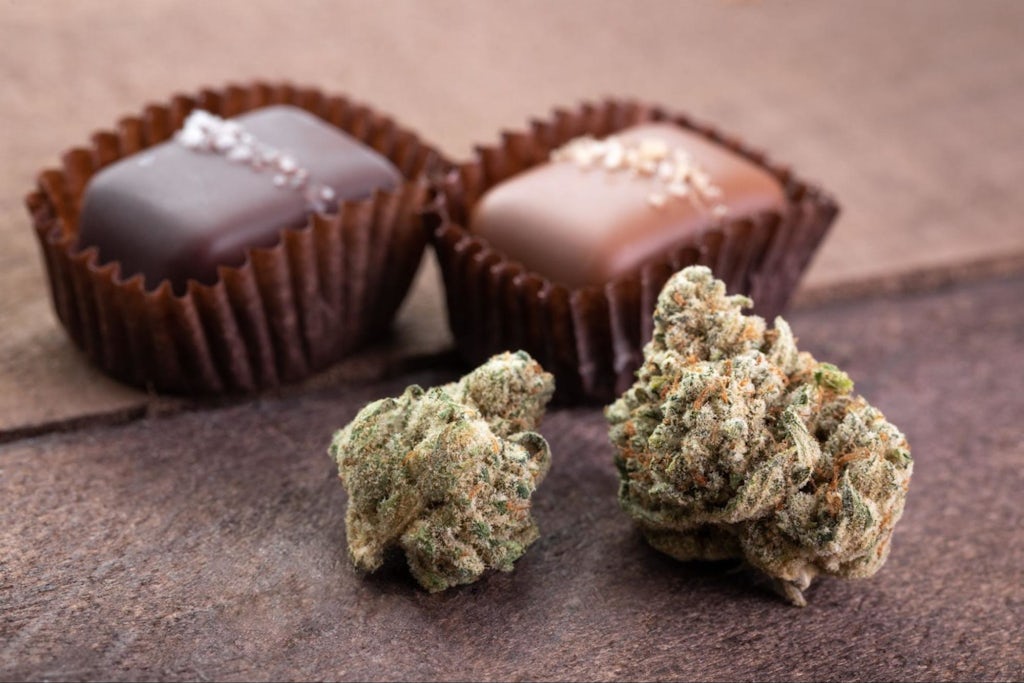
What do edibles do to you?
There are three main ways that cannabis can be administered:
- orally
- topically
- inhalation
Edibles are an oral method of ingestion. When you eat a cannabis-infused brownie or gummy, cannabinoids enter the gastrointestinal tract and make their way into the gut before being absorbed into the bloodstream. The cannabinoids are then carried via the portal vein to the liver, where they’re metabolized. 2
When cannabis is metabolized in the liver, a unique phenomenon takes place. Delta-9 THC is converted into a significantly more potent form of THC called 11-hydroxy-THC. Older studies in humans suggest that 11-hydroxy-THC could be 2-3x more potent than THC itself. In a 2020 study on rodents it was reported that 11-hydroxy-THC can be over 7 times more potent than Delta-9 THC, at least in mice. It’s this form of THC that is released by the liver into the bloodstream. This lengthy process of digestion, metabolization and systemic release helps explain why edibles take so long to kick in, and why they can be incredibly potent when they do. 3
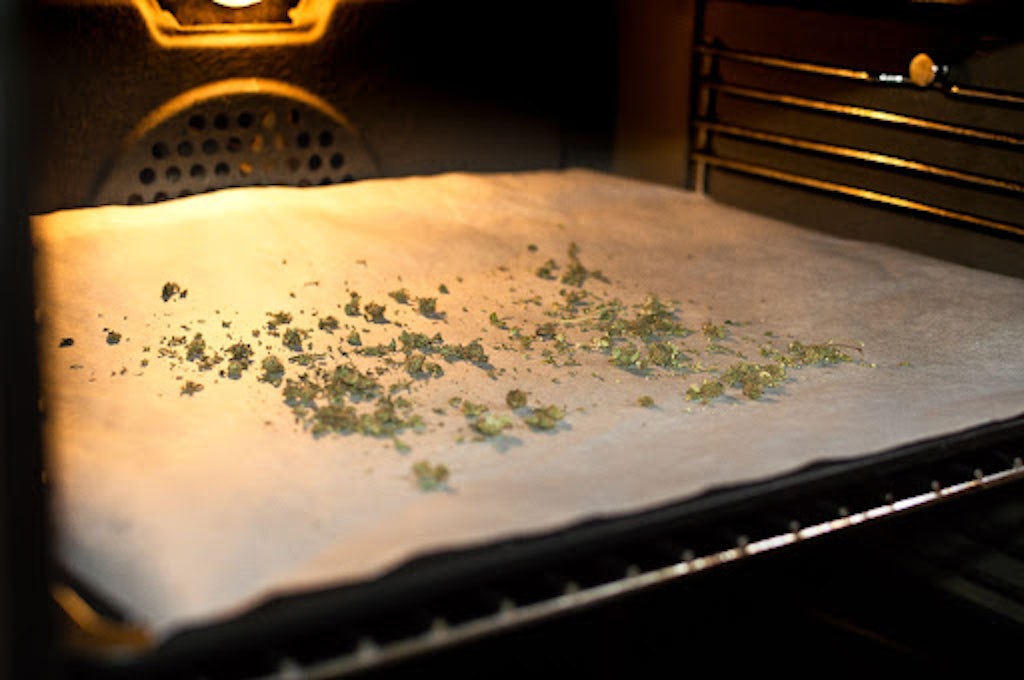
“Edibles are interesting because they’re actually treating you with a different medicine,” says Dr. Jordan Tishler, expert cannabis physician at InhaleMD.
“Most people will be aware that when you inhale cannabis, you’re getting a mixture of chemicals including Delta-9 THC. This has a rapid onset and relatively short duration of action.”
However, Tishler emphasizes that the 11-hydroxy-THC that’s released from eating edibles behaves in a slightly different way to Delta-9 THC.
“11-hydroxy-THC has similar action, but is slower to work and lasts much longer–typically about 8-12 hours. So orally ingested cannabis acts like an extended release version of cannabis,” reflects Tishler.
This is the main way that inhalation methods differ from edibles. When you inhale cannabis by smoking or vaping, the cannabinoids enter systemic circulation almost instantly by being absorbed into the lungs, and into the bloodstream.
How are edibles different from inhalation?
Another major reason why oral administration differs from inhalation is because the process of digestion and metabolism. When cannabis is ingested orally, it must pass through the acid of the stomach and by the enzymes in the intestines and liver. This process significantly reduces the bioavailability (how much of a drug that actually makes it into the blood) of the cannabinoids. The process of drug breakdown before absorption is a phenomenon known as the first pass effect. THC that’s consumed orally, for example, is only 4% to 12% bioavailable and absorption itself can be highly variable. THC bioavailability after smoking on the other hand, is approximately 10 to 30%. 4 5
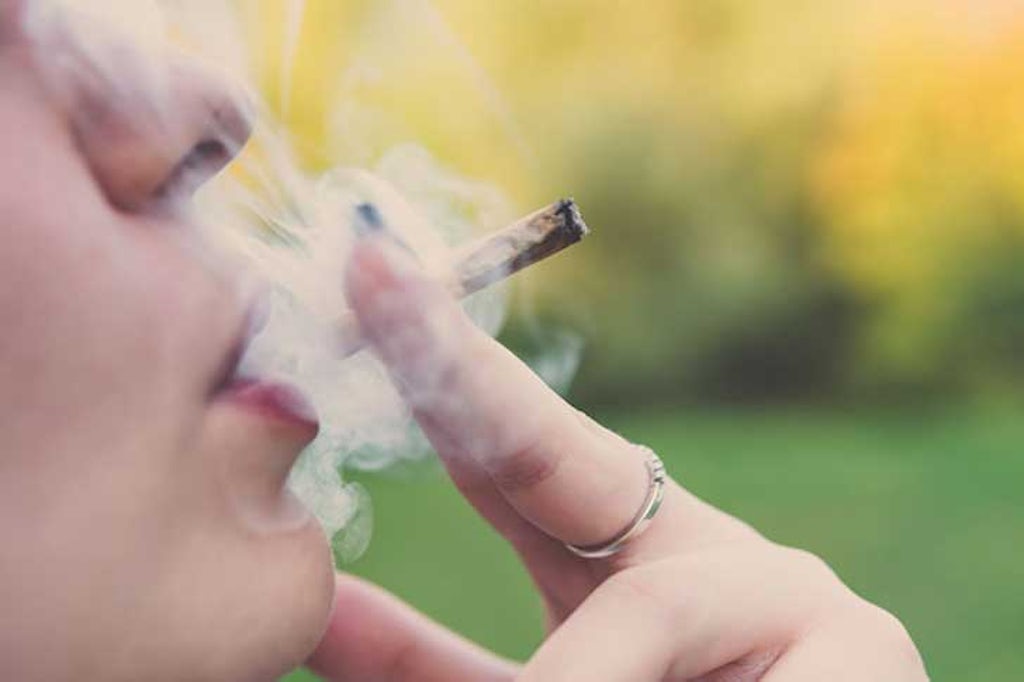
In the case of topical administration methods, cannabis is applied to the skin. Some lotions and salves exert localized effects on the area, and these are known as topical products. (these are known as topical products). Other cannabis solutions are applied to and absorbed through the skin, leading to absorption into the bloodstream; these are known as transdermal products).
How do you dose edibles?
It can be easy to overdose on edibles, and not realize that you’ve done so until much later. The maximum effects of the edibles may take as long as three hours to become fully apparent, or potentially even longer for larger doses or when taken with a fatty meal. 6
The way that edibles are packaged can also make it challenging for consumers to determine correct dosage. For example, consumers may assume a single cannabis-infused cookie represents a single serving. But a single cookie may contain 100mg of THC, and a single intoxicating dose of THC is 10 to 30 milligrams of THC. It’s impractical to divide a cookie into ten portions–so it can be hard to get the dosage right, unless you’re consuming single gummies. 7
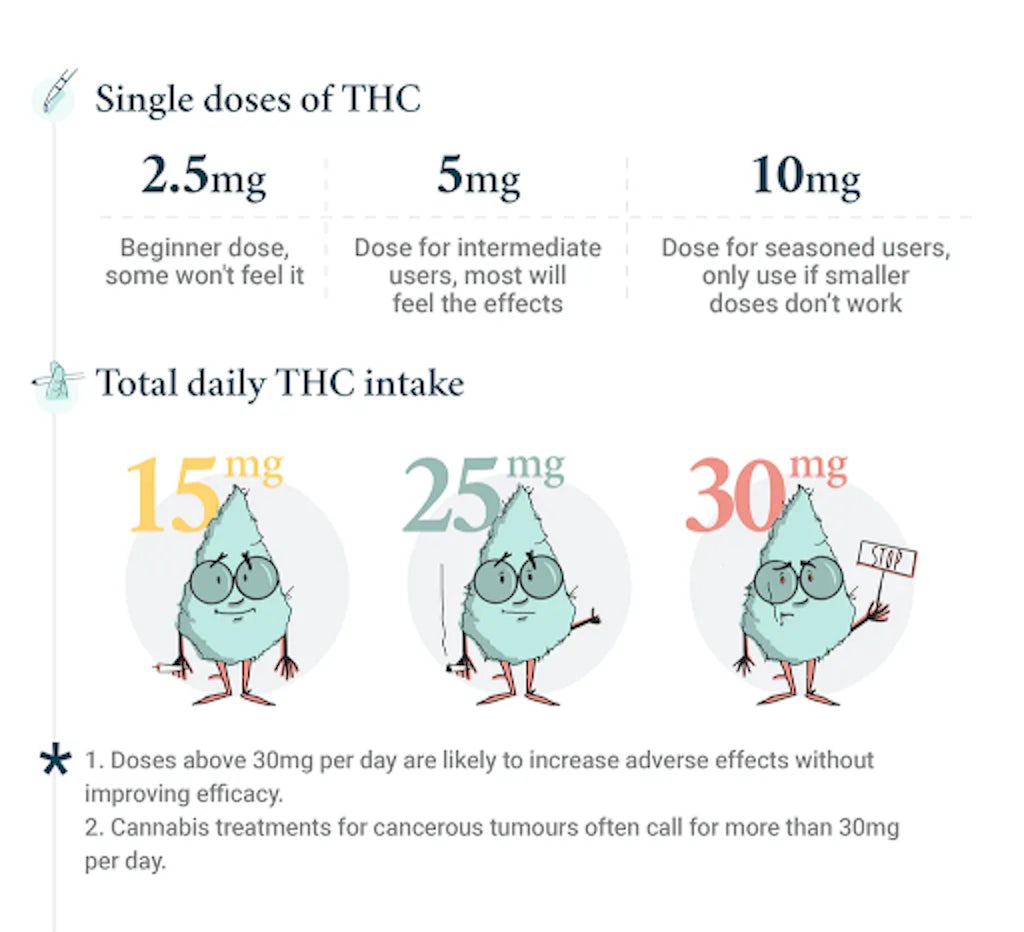
Tishler adheres to the following protocol for edibles.
“Unless someone is generally very sensitive to medications, I typically start at 5mg. I allow 1-2 weeks for the patient to become comfortable with the experience and to allow their body to acclimate.”
Tishler points that while an average dose is 10mg, many recreational doses of edibles can exceed this.
“I almost never go above 20mg per dose,” cautions Tishler. “Typically, I’ll dose once or twice a day, depending on what illness(es) we’re treating.”
How long does it take for edibles to kick in?
Edibles take longer to kick in than topical or inhalation delivery methods.The delayed onset can be misleading for people who are used to an instantaneous effect from inhaled cannabis, causing them to ingest excessive doses of edibles before the peak effects have occurred. 8
“This can be a bit variable and is one of the downsides to oral cannabis medicines,” says Tishler.
“Typically, they kick in in around 1 hour. It may be a little sooner, but more often it may be a bit slower. So 1-2 hours would be normal.”
In contrast, inhalation delivery methods typically kick off after 15-30 minutes. There’s not a great deal of data on dermal and transdermal cannabis topicals, but one study suggests the onset may be as quick as five minutes. 9
It’s vital to point out that there are also several factors that can influence the onset time of edibles. If your stomach is empty, edibles work much faster. The more food that’s in your gut, however, the longer it will take for the cannabinoids to be absorbed through the gut walls and metabolized by the liver. Gender, metabolism, weight, and cannabis tolerance can also affect the onset time.
THC and CBD, the major cannabinoids present in cannabis, may also have slightly different onset times when consumed in edible form. The effects of THC usually kick in after 30-90 minutes. CBD onsets times appear similar to that of THC, but because CBD doesn’t get you high, it’s a more difficult to discern the onset of effect. 10
Edible Dosing Calculator
You can use flower or any cannabis concentrate, as long as you know the THC/CBD content.
How strong is your cannabis?
How long do edibles last?
Edibles last significantly longer than other administration methods. The peak effects are usually experienced after three hours, but the effects can linger in the body much longer. 11
“Typically, the beneficial effects last between 8-12 hours,” says Tishler. “THC can be measured in the body for weeks, but it’s no longer working as a medicine.”

In contrast, the effects following inhalation can last from 1-3 hours, with full effects peaking around 30 minutes. Individuals may experience some light, lingering effects for up to six hours. Overall, however, the effects of inhalation are significantly shorter.
In the case of topicals, the duration of the effects can vary. Dermal products (that target a localized area) may last up to a few hours. Transdermal products (that allow slow release through the skin into the bloodstream are can work up to 12 hours, depending on the dose and formulation.
Do edibles work for everyone?
Curiously, it appears that edibles may not work for everyone. Some individuals appear to be “ediblocked” and are simply wired differently. These individuals experience no effects at all after consuming THC edibles, or have an exceptionally high tolerance that means they need to take a significant dose to feel the effects.
While there’s no solid research into the phenomenon as of yet, it appears that metabolism in the liver may play a role. The efficiency (or inefficiency) of certain enzymes influence how THC is processed and metabolized, altering its effect on the body. These variations in metabolism, as well as an individual's tolerance appear to be major factors in how people experience edibles. 12
Who should take edibles?
Each delivery method comes with a unique set of benefits and limitations, and this is true of edibles too.
If you’re evaluating whether edibles are the right administration method for you, it’s vital to consider these five points:
- Onset: how fast would you like the cannabis to take effect? Inhalation has the fastest onset, and ingestion the slowest.
- Duration: how long would you like the effect to last? Inhalation has the shortest duration of effects and ingestion the longest.
- Contraindications: if you suffer from digestive issues, ingestion may not be a good option for you. On the other hand, if you live with a pulmonary condition such as asthma, inhalation should be avoided.
- Dosing: edibles are easier to use when looking for precise dosing as they have a fixed amount of THC. However, this is slowly changing with new technologies that allow precise dosing when inhaling.
- Personal and social constraints: edibles can represent a more discrete choice than inhalation.
Tishler also points out that if you’re using edibles to treat a condition, it’s vital to assess whether edibles represent the most effective option for that illness. “Inhalation is better for acute or episodic problems like a migraine headache, where we want rapid onset to stave off the headache and where, once the headache resolves, we’d like the medicine to wear off too,” reflects Tishler. “Edibles, because they’re slow to start and longer-acting, would be a poor second choice in this scenario, but would be the approach of choice for chronic pain like arthritis of the knee or back.”
If you’re wondering whether edibles are bad for you, it’s vital to remember that edibles have a unique advantage over certain inhalation methods. Unlike smoking, edibles don’t cause inflammation of the lungs, or expose the body to any harmful toxins or health risks.
Research shows that this represents a major reason that consumers opt for edibles over smoking. Edibles that are free of artificial flavors, preservatives, colors, sweeteners or gluten can also be nutritious--like CBD-infused nut butters, for example. 13
Are cannabis edibles legal?
The legality of edibles depends on where you live. In the US, edibles are usually legal in states where recreational or medical cannabis is legal.
CBD edibles may be subject to different laws, however. According to the FDA, the sale of foods, beverages and dietary supplements containing CBD is illegal at present. Certain states, like Maryland, have clamped down on the sale of CBD-infused foods. Others, such as Florida, have made provisions to allow the sale of CBD-infused edibles. If you’re unsure about the legality of edibles in your state, check out the rules before you purchase.
Risks and side effects of THC edibles
Edibles carry certain risks and can cause side effects (like all cannabis administration methods).
Some of the more common risks associated with THC edibles include:
- Overdosing or redosing too soon: Individuals who are not used to the delayed onset of edibles may be more likely to redose, rather than wait for the effects to begin. A large proportion of ER visits following edible use occur for this reason, with users experiencing acute symptoms like temporary psychosis, anxiety and intoxication as a result of inadvertently overdosing. Don’t forget that there are things you can do to help yourself if you overdose on edibles.
- A variable experience: There’s a diversity of factors that can affect the intensity of your experience with edibles, including gender, cannabis tolerance, metabolism, and when you last ate a meal. The delayed onset and extended duration of effects associated with edibles can also affect your experience. It’s easier to become intoxicated, and for the effects to last longer, after using edibles
- Side effects associated with THC edibles: If you thought edibles mean you can sidestep some of the more unpleasant side effects associated with THC like a dry mouth, dry eyes, or a racing heart, that’s not the case. Similar to inhalation, these side effects can also occur with edible use. Edibles can also make your eyes red.
How to make weed edibles
The rising popularity of marijuana edibles has seen many people experimenting with making cannabis-infused dishes at home. If you’re interested in baking with cannabis, you’ll need to decarboxylate your weed first, before using it to infuse butter or oil. Once your canna-butter or canna-oil is ready, you’re ready to get cooking.
While the idea of making edibles is definitely fun, there are lots of things to remember. It’s most important to ensure your cannabis is decarboxylated before you cook with it. Be conservative when dosing home-made goodies, as it can be challenging to distribute the cannabinoid content evenly throughout the mixture.
It’s also useful to remember that incorporating cannabis into fat-dense dishes or meals can enhance its bioavailability. Cannabinoids are fat-soluble so consuming them with other fats can improve the cannabinoid absorption rates. That’s why so many edibles are served as dessert items like cookies or brownies, or in jars of nut butter. 14
Sources
- Barrus, D. G., Capogrossi, K. L., Cates, S. C., Gourdet, C. K., Peiper, N. C., Novak, S. P., Lefever, T. W., & Wiley, J. L. (2016). Tasty THC: Promises and Challenges of Cannabis Edibles. Methods report (RTI Press), 2016, 10.3768/rtipress.2016.op.0035.1611. https://doi.org/10.3768/rtipress.2016.op.0035.1611
- Barrus, D. G., Capogrossi, K. L., Cates, S. C., Gourdet, C. K., Peiper, N. C., Novak, S. P., Lefever, T. W., & Wiley, J. L. (2016). Tasty THC: Promises and Challenges of Cannabis Edibles. Methods report (RTI Press), 2016, 10.3768/rtipress.2016.op.0035.1611. https://doi.org/10.3768/rtipress.2016.op.0035.1611
- Wiley, J. L., Barrus, D. G., Farquhar, C. E., Lefever, T. W., & Gamage, T. F. (2021). Sex, species and age: Effects of rodent demographics on the pharmacology of ∆9-tetrahydrocannabinol. Progress in neuro-psychopharmacology & biological psychiatry, 106, 110064. https://doi.org/10.1016/j.pnpbp.2020.110064
- Herman, T. F., & Santos, C. (2019). First pass effect.
- McGilveray I. J. (2005). Pharmacokinetics of cannabinoids. Pain research & management, 10 Suppl A, 15A–22A. https://doi.org/10.1155/2005/242516
- Barrus, D. G., Capogrossi, K. L., Cates, S. C., Gourdet, C. K., Peiper, N. C., Novak, S. P., Lefever, T. W., & Wiley, J. L. (2016). Tasty THC: Promises and Challenges of Cannabis Edibles. Methods report (RTI Press), 2016, 10.3768/rtipress.2016.op.0035.1611. https://doi.org/10.3768/rtipress.2016.op.0035.1611
- Zipursky, J. S., Bogler, O. D., & Stall, N. M. (2020). Edible cannabis. CMAJ : Canadian Medical Association journal = journal de l’Association medicale canadienne, 192(7), E162. https://doi.org/10.1503/cmaj.191305
- Zipursky, J. S., Bogler, O. D., & Stall, N. M. (2020). Edible cannabis. CMAJ : Canadian Medical Association journal = journal de l’Association medicale canadienne, 192(7), E162. https://doi.org/10.1503/cmaj.191305
- Maida, V., & Corban, J. (2017). Topical medical cannabis: a new treatment for wound pain—three cases of pyoderma gangrenosum. Journal of Pain and Symptom Management, 54(5), 732-736.
- McGilveray I. J. (2005). Pharmacokinetics of cannabinoids. Pain research & management, 10 Suppl A, 15A–22A. https://doi.org/10.1155/2005/242516
- Zipursky, J. S., Bogler, O. D., & Stall, N. M. (2020). Edible cannabis. CMAJ : Canadian Medical Association journal = journal de l'Association medicale canadienne, 192(7), E162. https://doi.org/10.1503/cmaj.191305
- Gasse, A., Vennemann, M., Köhler, H., & Schürenkamp, J. (2020). Toxicogenetic analysis of Δ9-THC-metabolizing enzymes. International journal of legal medicine, 134(6), 2095–2103. https://doi.org/10.1007/s00414-020-02380-3
- Barrus, D. G., Capogrossi, K. L., Cates, S. C., Gourdet, C. K., Peiper, N. C., Novak, S. P., Lefever, T. W., & Wiley, J. L. (2016). Tasty THC: Promises and Challenges of Cannabis Edibles. Methods report (RTI Press), 2016, 10.3768/rtipress.2016.op.0035.1611. https://doi.org/10.3768/rtipress.2016.op.0035.1611
- Zgair, A., Wong, J. C., Lee, J. B., Mistry, J., Sivak, O., Wasan, K. M., Hennig, I. M., Barrett, D. A., Constantinescu, C. S., Fischer, P. M., & Gershkovich, P. (2016). Dietary fats and pharmaceutical lipid excipients increase systemic exposure to orally administered cannabis and cannabis-based medicines. American journal of translational research, 8(8), 3448–3459.
Sign up for bi-weekly updates, packed full of cannabis education, recipes, and tips. Your inbox will love it.

 Shop
Shop Support
Support

